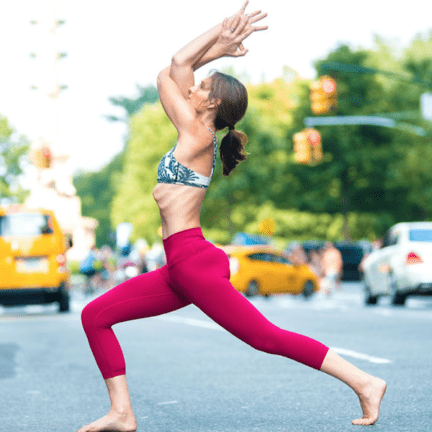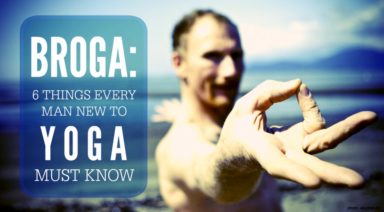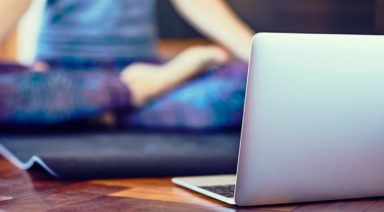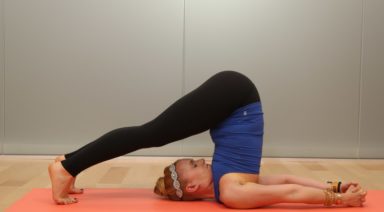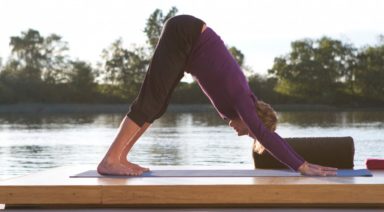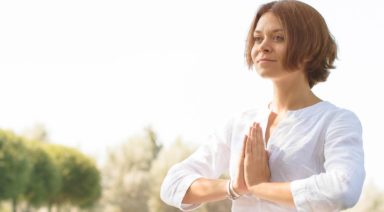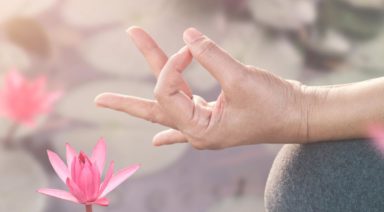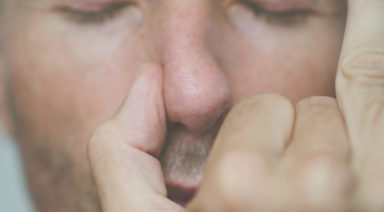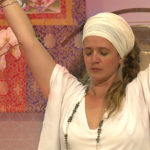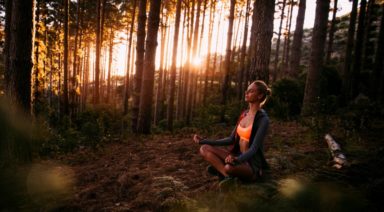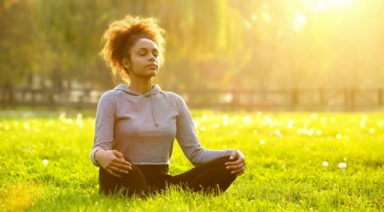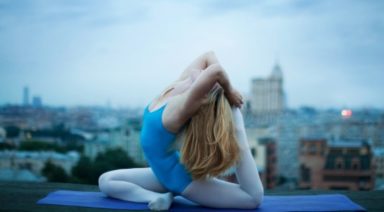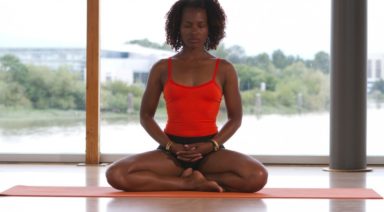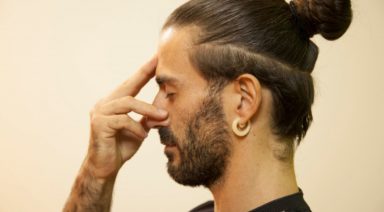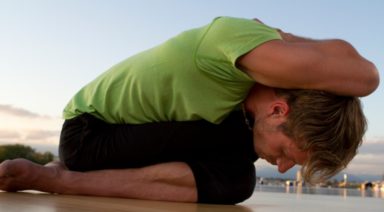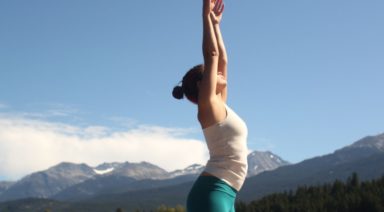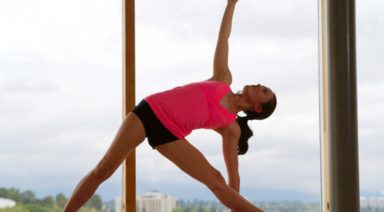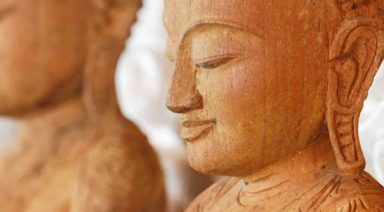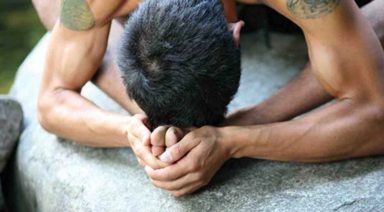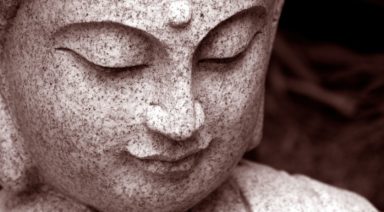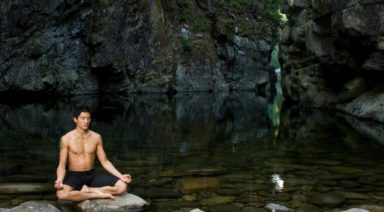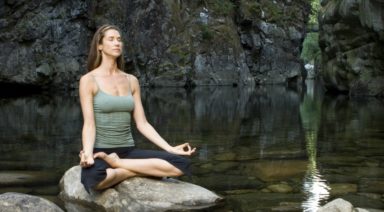How to Improve Forward Fold with Better Flexibility
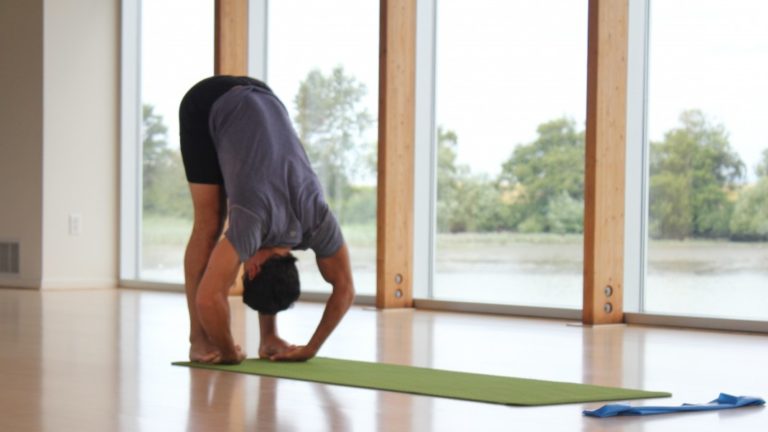
If I had a dollar for every time a yoga student or friend bemoaned his or her tight hamstrings, I would be pretty wealthy. It seems that people are super concerned about hamstring flexibility, and strain hard to touch their toes. Frankly, this ability is overrated.
Located on the back of the legs, the hamstrings are made up of three muscles with tendons that cross over both the knee and hip joints. Because the muscle attaches to two joints, any decreased joint mobility affects the length of the muscle.
Because of our sedentary culture, we spend an inordinate amount of time sitting — with both the knees and hips bent. This position directly impacts the length of the hamstrings. Athletic activities, such as running and biking, further shorten the hamstrings. This tightening also affects the pelvis because the tendons attach to the sit bones (ischial tuberosities), the bottom hooks of the pelvic bowl. In sitting, and even in standing, the shortening of the hamstrings can rock the pelvis backward, causing a rounded, slouchy position in the lower back. This rounded position can stress the back muscles, creating the potential for injury.
Now take this understanding of pelvic alignment and physiological length of the hamstrings onto the yoga mat, and move through a series of forward bends: the back muscles and tendons, attached to the sit bones, become genuinely cranky. Too often in yoga classes, students are most concerned with keeping their legs straight while trying to get their hands on the floor in a forward fold. Accomplishing this move really does not matter for general function and mobility, and can actually be injurious if done incorrectly. If a student strains to get their hands to the floor, and rounds at the pelvis, the lower back (and possibly the hamstring tendons) are at risk of becoming strained.
If the hamstrings are tight but the pelvis is allowed to tip forward as the student moves into a standing forward fold, the lower back is safe and, with time and practice, the student can work on gradually straightening their knees. The goal is to hinge at the hip, so that the lower belly moves toward the upper thighs. As long as pelvic mobility is not affected, and the core is engaged, a slight tightness in the hamstrings might offer some protection to less-flexible students by acting as a bumper pad to protect them from overstretching the connective tissue in their muscles and tendons.
Moving from the pelvis safely and successfully helps gain and maintain hamstring flexibility.
Complete this practice to help improve your forward fold with both pelvic mobility and hamstring flexibility:
- Start with cat/cow by going down on all fours. Focus on moving your pelvis by moving the sit bones up and down. Don’t dump into the lower back.
- Move into downward facing dog. Lift the sit bones up towards the ceiling, lifting the tendons of the hamstrings. Keep the pelvis in this position as you tuck the toes, lift the knees off the ground and gradually straighten the knees. Move into down dog gradually as you keep the pelvis stable, stopping when the knees can no longer straighten without rounding the back.
- If your hamstrings are really tight, place your hands on a chair and do the same cat/cow transition into a down dog. The focus should still be on lifting the tailbone.
- In down dog, place a block between your upper thighs and squeeze the inner thighs together. Try to straighten the knees, with the block in place, by pulling the lower belly in and lightly squeezing the sit bones. This movement activates the hamstrings, inner thighs and quadriceps (on the front thigh).
- Lie on your back, and place a strap, or a towel, around your foot and straighten the knee. Instead of pulling the foot closer to your head, keep the foot over the hip point and firm the front thigh muscle/quadricep to stretch the hamstrings. This alignment keeps the pelvis in a slight tilt and does not let the lower back round (as it would if you kept pulling the foot towards the head).
- Keep your abdominals engaged as you work on your pelvic mobility, on all fours or on your hands in down dog, so that you don’t dump into your lower back.
Completing this practice, and focusing on the pelvis instead of the hamstrings, may get you closer to the promised land of palms on the floor – or not. Remember, yoga is like life. It isn’t about the result; getting your palms down is much less important than how you move towards that goal.
Broga: 6 Things Every Man New To Yoga Must Know
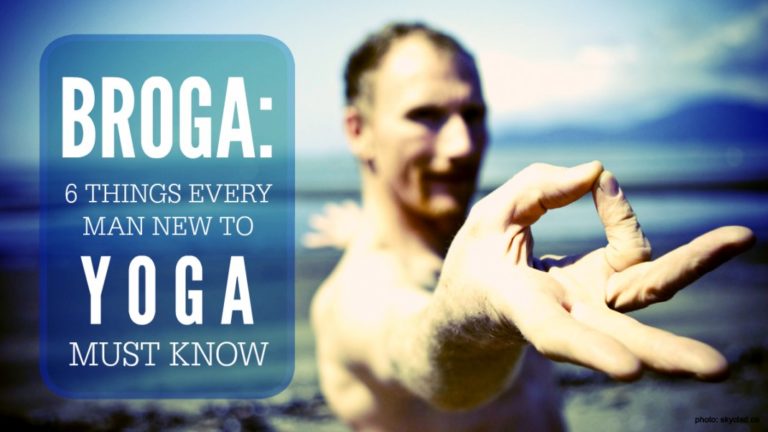
If you’re a man thinking of taking up yoga, or you’ve just started, then you must read this. It will save you time, confusion and even a bit of embarrassment.
Eyes Wide Shut Guys, when in down dog, learn to close your eyes and get into the pose. Why? One, to feel your way into a deeper stretch. Two, and perhaps more importantly, if you’re in front of a woman and she’s moving through her vinyasa, you could be making it awkward. You may want to be staring at your belly button, but trust me, those eyes may wander and make someone feel uncomfortable.
Kiss My Asana. When you’re in prasarita (a wide-legged forward bend) and you’re in a full class, please be considerate. Stagger your position with your neighbors, and as recommended in the point above, close your eyes. You also want to make sure you’re giving your female neighbors plenty of space coming in and out of the pose, just in case it looks like you’re trying to be a little too… neighborly.

